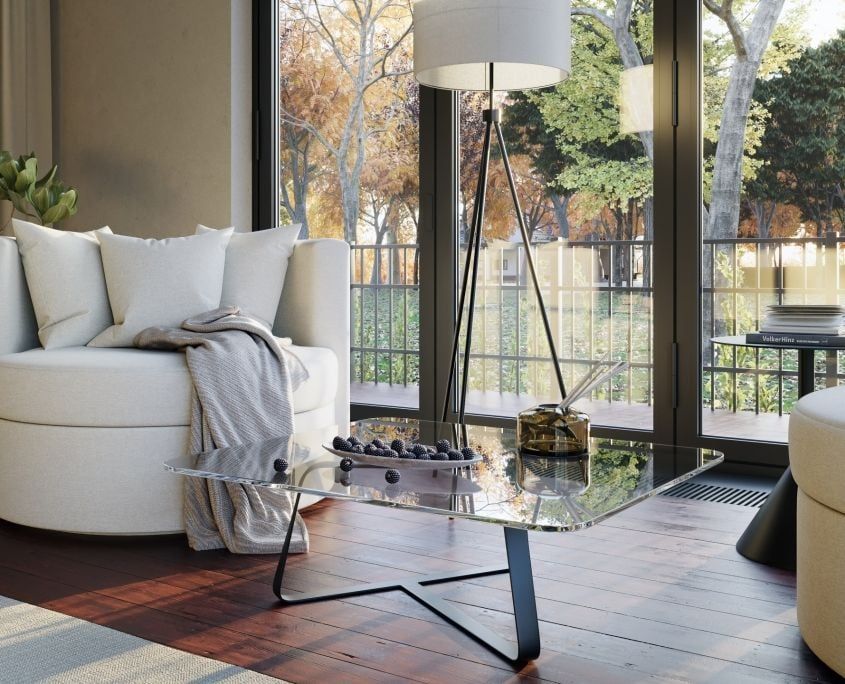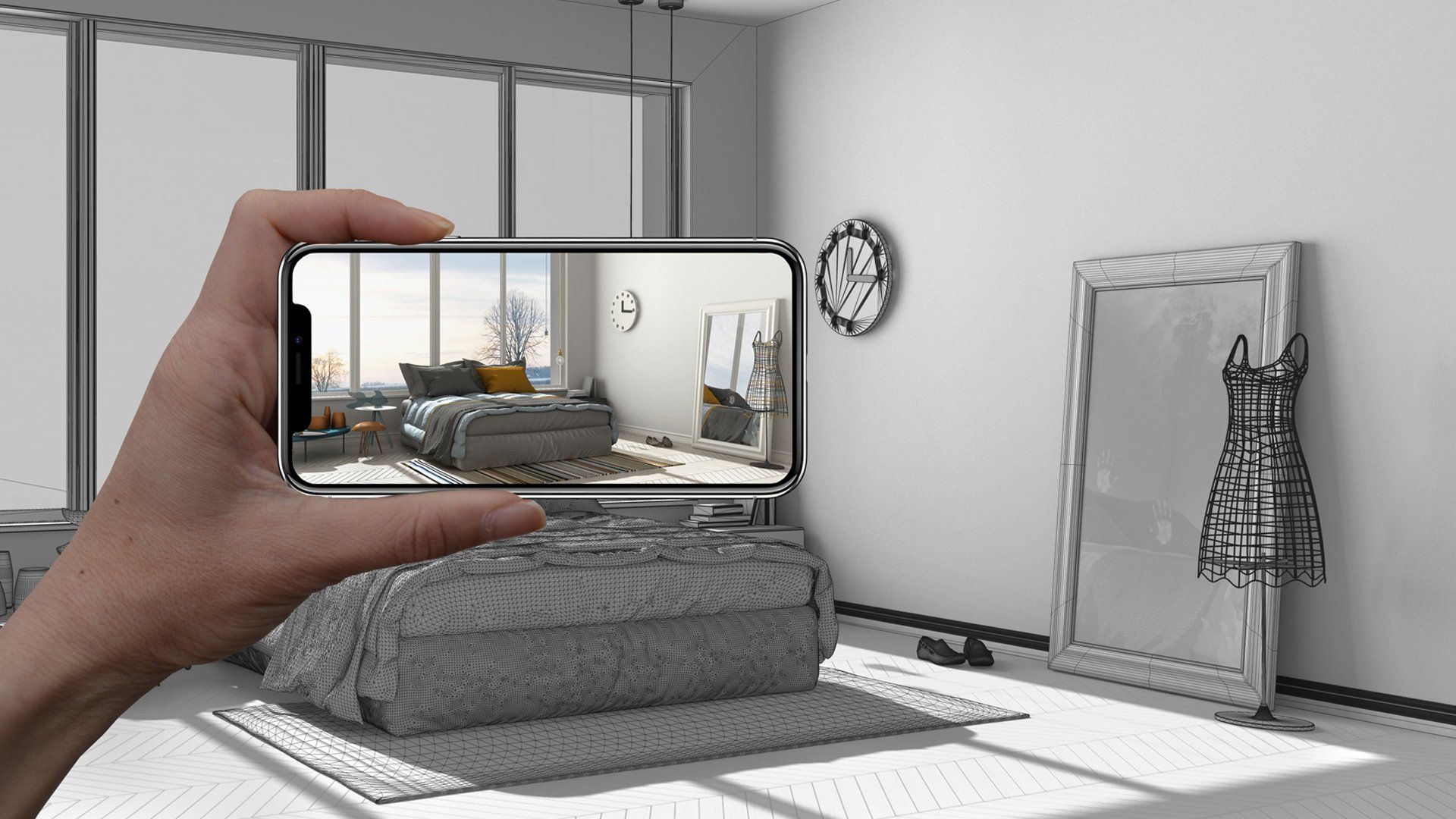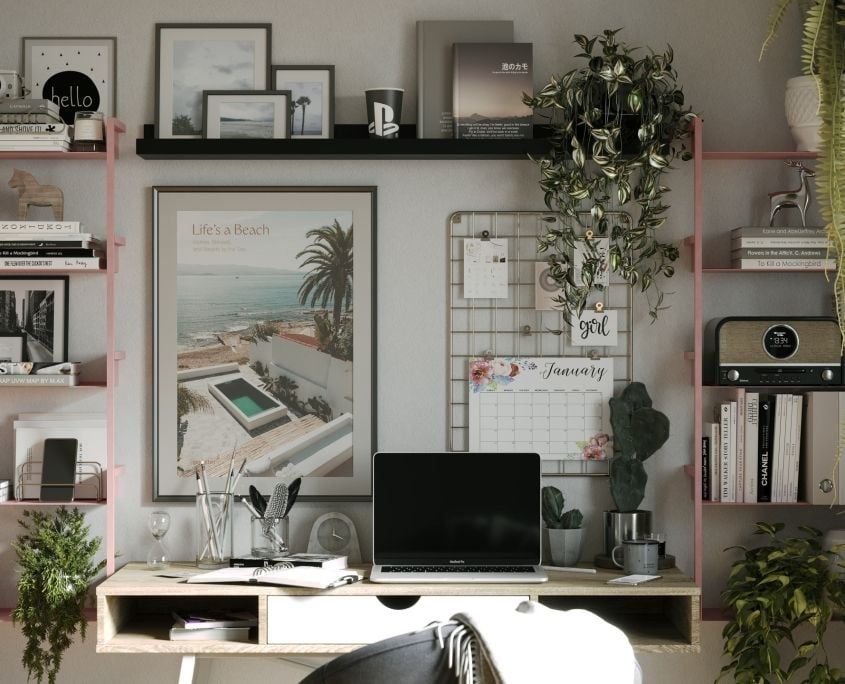3D modelling in advertising is the process of digitally building a three-dimensional furniture model using special software. It allows a brand’s furniture products to be displayed in highly realistic photography, ranging from lifelike shots to interactive experiences with 3D advertising that simply cannot be achieved with traditional photography.
CGI offers furniture companies greater flexibility and cost savings by replacing the need for physical prototypes and photoshoots. Changing item features, such as colors or materials, can be done easily and rapidly to keep up with current market trends. Realism in 3D renders keeps clients engaged by allowing them to visualize how furniture would look in a space, creating better experiences and encouraging more conversions.
This article by our 3D rendering company will explore insights on advertising using CGI tools.
1. Visual Appeal and Realism

Professional CGI in advertising allows to create lifelike images that capture customers’ attention by bringing the furniture to life in ways traditional photography often cannot. By presenting furniture in rich, vivid detail, businesses can highlight the intricate features, designs, and craftsmanship of their furniture. These striking visuals help engage potential buyers, making products stand out in a competitive market.
Product 3D models in advertising excel in showcasing textures, colors, and lighting with exceptional precision, providing a level of detail that feels almost tangible. Unlike traditional photography, where lighting conditions and imperfections can affect results, 3D renders can be fine-tuned to achieve perfect visuals. This realism enhances the buyer’s perception and helps them visualize how the furniture would fit into their spaces, fostering confidence in their purchase decisions.
2. Customization and Personalization

3D furniture modelling empowers companies to personalize product images based on client preferences, offering options to change colors, materials, or layouts. This adaptability enhances the shopping experience, allowing customers to explore different variations and find exactly what suits their style.
Examples of customization in 3D modeling:
- Color Options: Easily adjust the color of a dining set from classic oak to a modern grey finish to match different decor styles.
- Material Choices: Showcase a sofa in a variety of materials, such as leather, linen, or velvet, to highlight different textures and aesthetics.
- Modular Configurations: Display shelving units in various sizes and configurations, allowing customers to see how they can fit and adapt to different spaces.
- Layout Adjustments: Show how sectional sofas can be rearranged to fit a room’s unique layout, providing clients with a fully customizable view.
These customization options along with engaging advertisement ideas for furniture increase client engagement and help to stand out by offering a more interactive and personalized shopping journey.
3. Cost-Effectiveness

Unlike traditional photography, which requires costly product samples, set designs, and professional photographers, 3D modelling in advertising allows companies to create high-quality visuals without physical photoshoots. By eliminating the need to ship furniture pieces to a studio, setting up complex lighting, or coordinating with photographers, CGI greatly cuts down on time and logistical hurdles.
Once a 3D model is created, it can be reused and adapted for multiple campaigns without additional expenses. Brands can easily adjust pictures for seasonal promotions. For instance, a Halloween-themed fall 3D rendering can do wonders on social media. Furthermore, businesses can change product colors, or showcase new materials without starting from scratch. This flexibility enables quicker turnaround times for marketing content, making 3D modeling a highly efficient and scalable solution.
4. Faster Production Times
High-quality 3D modeling in advertising streamlines the content creation process by allowing brands to produce high-quality visuals far more quickly than traditional methods. Instead of waiting for physical prototypes to be manufactured and scheduled for photoshoots, businesses can generate lifelike 3D renders within a fraction of the time. This acceleration not only speeds up the marketing timeline but also reduces delays associated with physical production and logistics.
The faster turnaround enabled by 3D modelling gives a significant edge in responding to market trends and customer demands. By quickly adjusting product visuals, organizations can align with current styles or seasonal preferences, ensuring their marketing stays relevant and timely. This agility helps capture consumer interest faster, keeping companies ahead in a highly competitive market. Furthermore, it provides great opportunities for further brand stretch and the introduction of new product lines.
5. Versatility Across Advertising Channels

One of the key advantages of 3D modelling in advertising is its versatility, allowing brands to repurpose images across a wide range of marketing channels:
- Online Ads: Create eye-catching, dynamic visuals for digital ad campaigns that drive engagement and clicks.
- Social Media: Share high-quality renders on platforms like Instagram, Facebook, or LinkedIn, keeping your feed fresh and visually appealing.
- Catalogs: Use 3D models in both digital and print catalogs, providing customers with detailed product views without the need for costly photoshoots.
- Websites: Enhance product pages with interactive 3D models that allow clients to rotate, zoom in, and explore products in detail.
CGI can be customized quickly, making it easier to tailor content for specific audiences or campaigns, resulting in more targeted and engaging marketing efforts. This adaptability significantly enhances the overall effectiveness of advertising strategies.
Multi-Channel Benefits
The technology of 3D commercial furniture modeling has emerged as a strong tool for manufacturers in the effort to seek more exposure for their companies by leaving an impact on marketing campaigns.
Consistent, high-quality CGI across all these platforms helps reinforce a cohesive brand identity. By maintaining the same visual quality and style, businesses can create a seamless experience for customers, increasing brand recognition and trust. Additionally, the flexibility of 3D assets ensures that marketing content remains adaptable, enabling companies to update or optimize visuals quickly as needed for different campaigns or channels.
6. Interactive and Immersive Experiences

Product 3D modelling in advertising opens the door to interactive features that transform the shopping experience. Options like 360° views allow buyers to explore furniture from all angles, while zoom functions enable them to examine intricate details closely. Additionally, augmented reality (AR) capabilities let shoppers visualize how furniture will look in their own spaces using their smartphones, creating a highly personalized experience.
These immersive tools help to engage e-shoppers and build confidence in their purchase decisions. By offering a realistic preview of products, clients feel more assured about their choices, reducing the hesitation with online shopping. This increased confidence leads to higher conversion rates, as customers are more likely to commit to purchases when they feel fully informed and immersed in the buying process.
7. Eco-Friendly Advertising Solutions

High-quality 3D modelling in advertising provides environmental benefits compared to traditional photoshoots, which often require physical samples, transportation, and energy-consuming setups. By eliminating the need for item shipping, travel, and extensive set designs, 3D modelling reduces the carbon footprint of creating marketing materials. This approach uses fewer physical resources, making it a more sustainable option for producing high-quality visuals.
Link to Brand Values
For brands committed to sustainability, leveraging 3D modeling in advertising aligns with eco-friendly values and can resonate strongly with environmentally-conscious buyers. Highlighting this commitment to sustainability appeals to consumers who prioritize eco-conscious choices and reinforces the brand’s message of innovation and responsibility. By adopting greener advertising practices, companies can differentiate themselves and build stronger connections with their target audience.
Professional 3D modelling in advertising enhances furniture marketing by offering realistic visuals, customization options, and cost efficiency. It eliminates the need for traditional photoshoots, saving time and resources while offering flexibility across multiple channels. Interactive features like 360° views and AR boost client engagement, and its eco-friendly nature aligns with sustainable company values.
Furniture brands aiming to stay competitive and innovative can try our 3D modeling services as a valuable tool. We will help you improve marketing efficiency, engage customers, and support sustainable practices.
